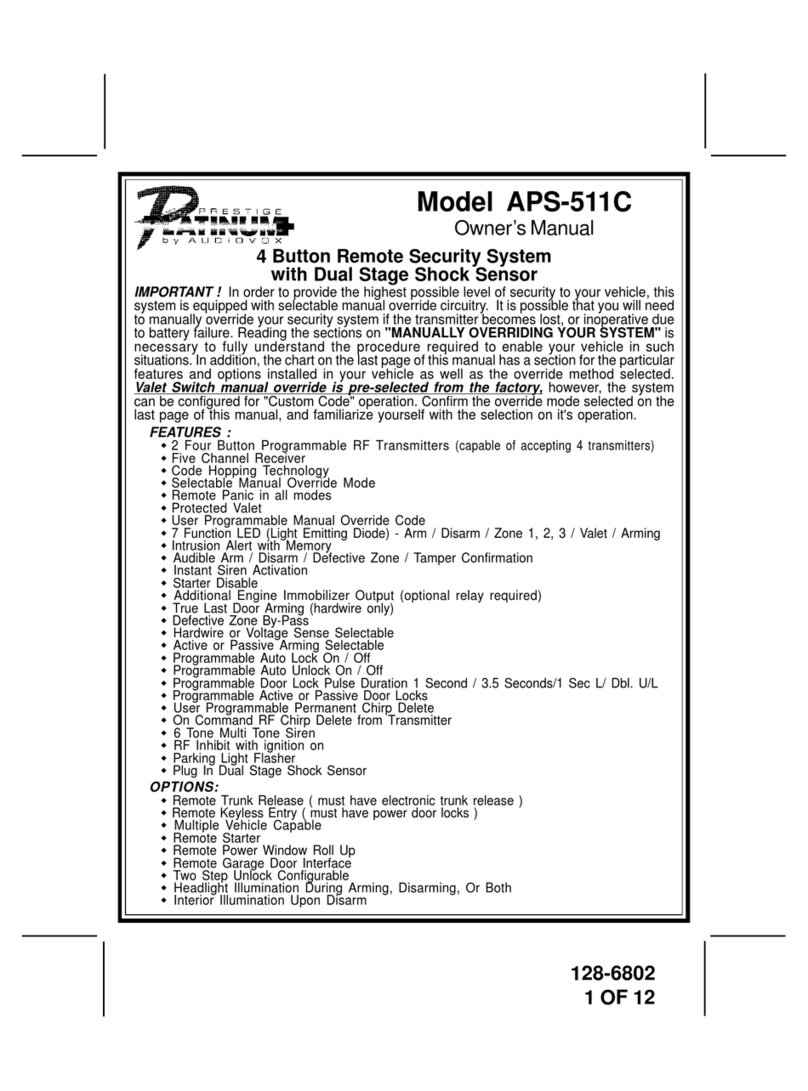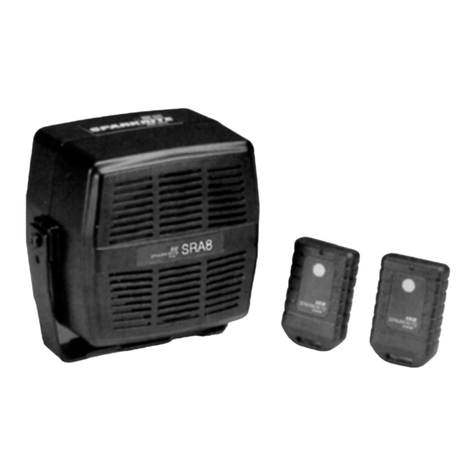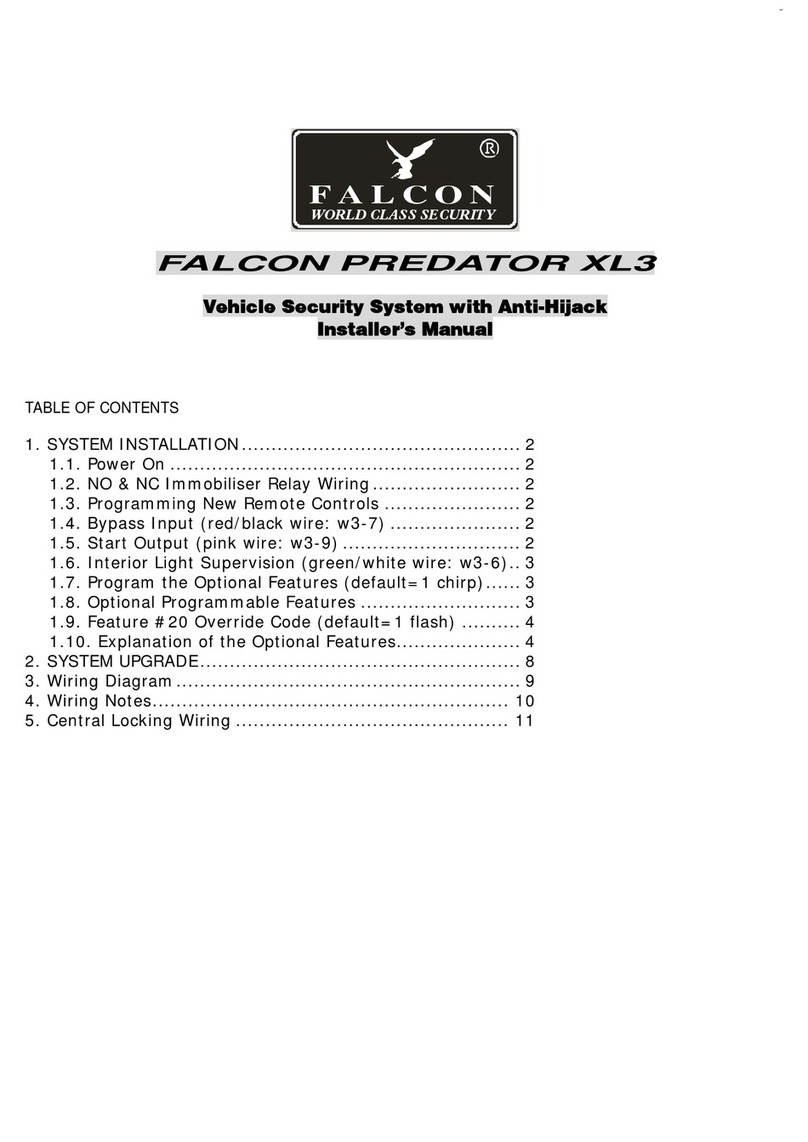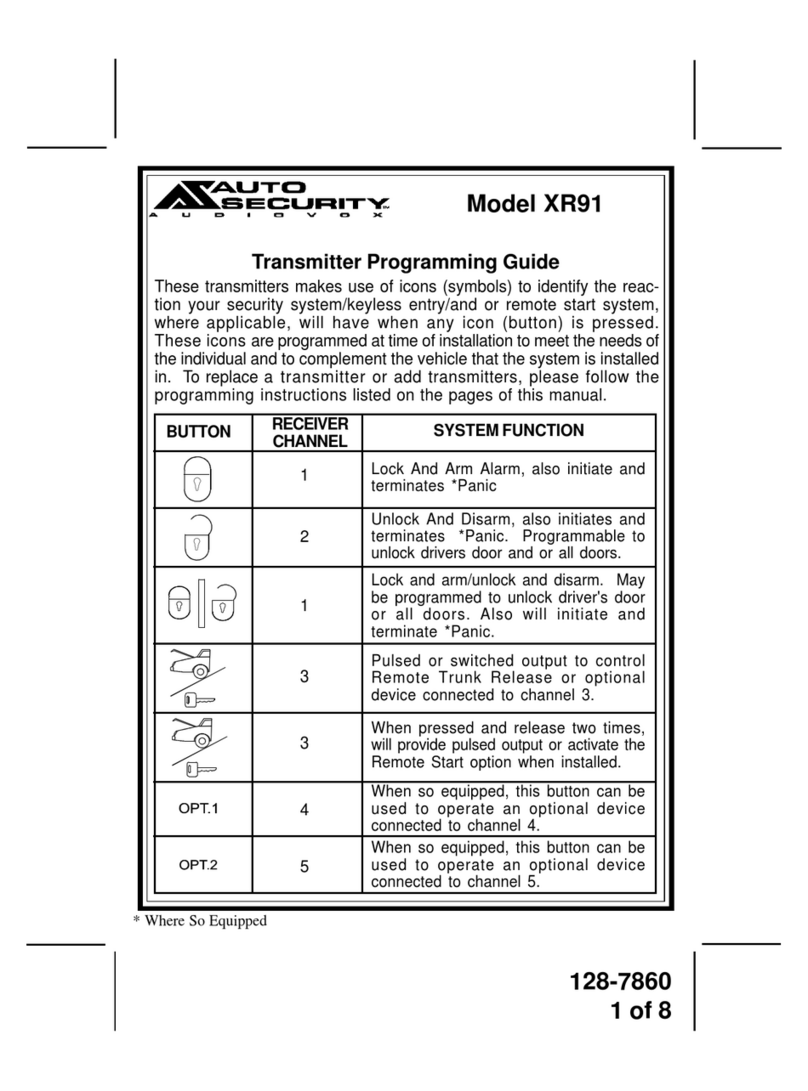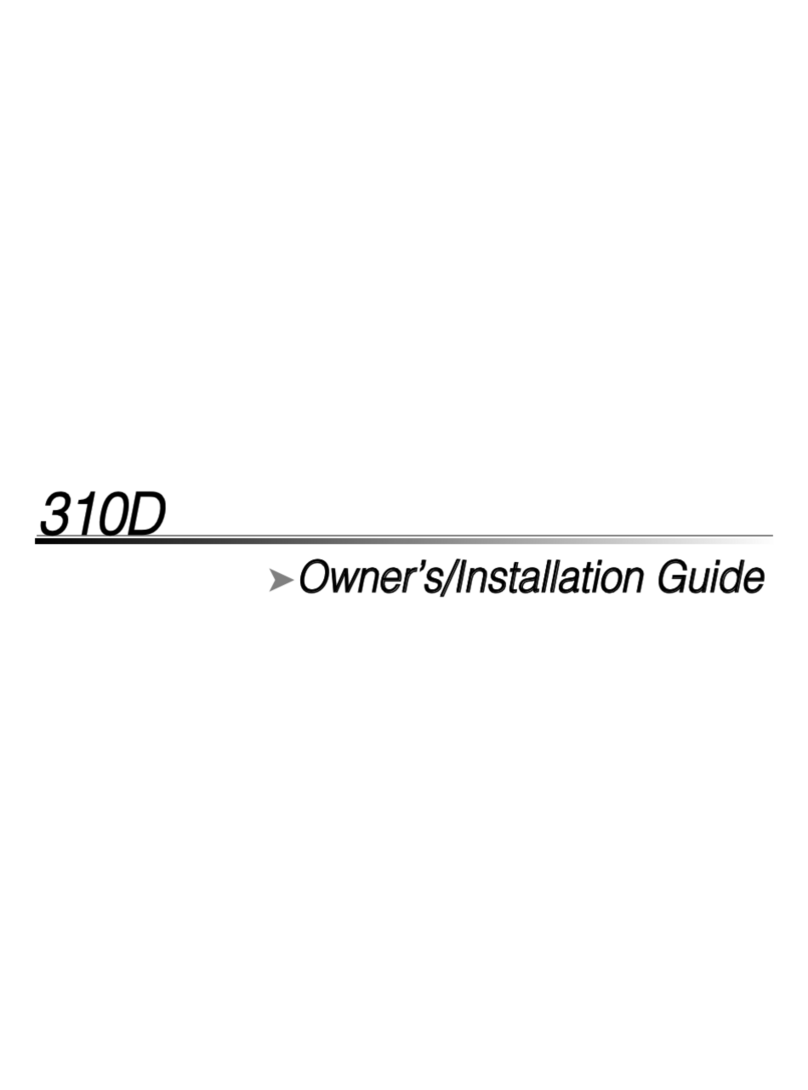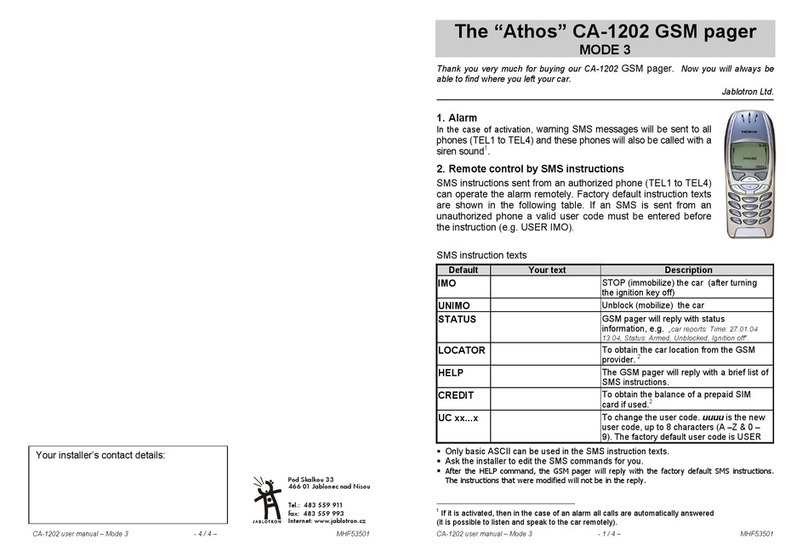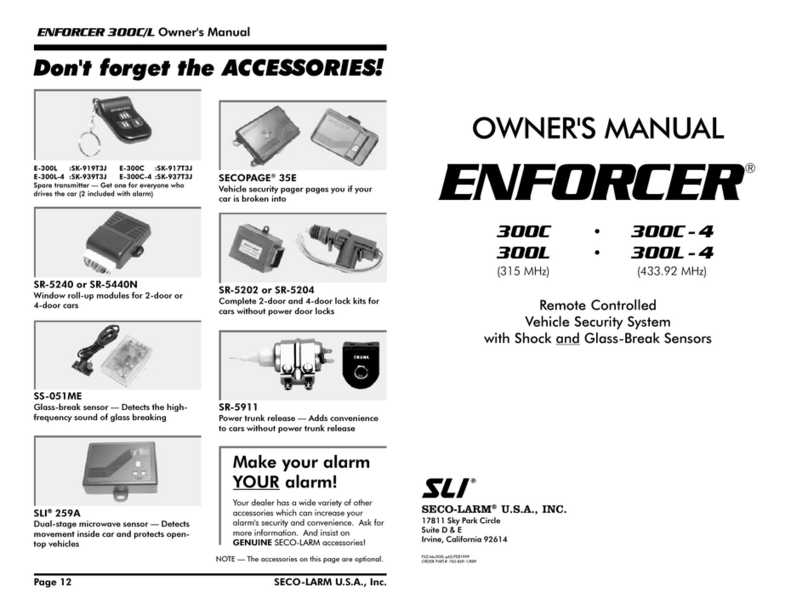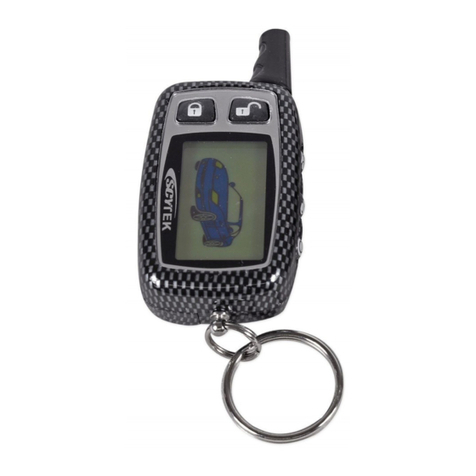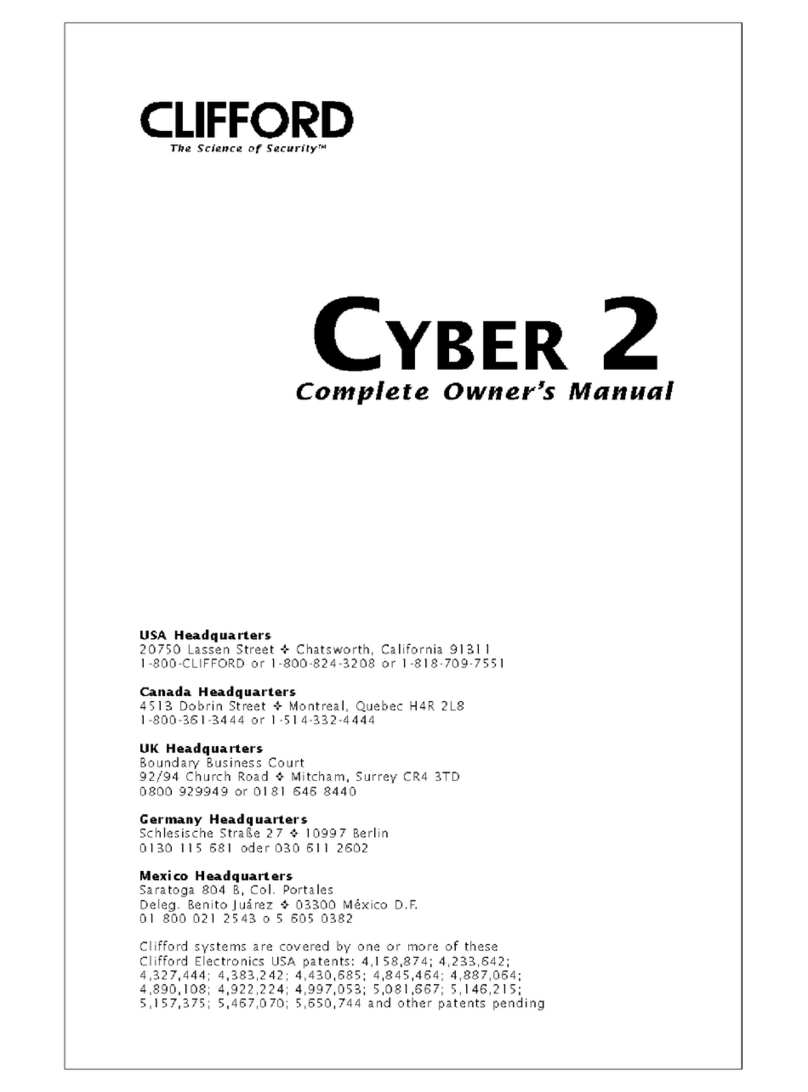2© 2001 Directed Electronics, Inc. Vista, CA
table of contents
Bitwriter™, Code Hopping™, DEI®, Doubleguard®, ESP™, FailSafe®, Ghost Switch™, Learn Routine™, Nite-
Lite®, Nuisance Prevention Circuitry®, NPC®, Revenger®, Silent Mode™, Soft Chirp®, Stinger®, Valet®,
Vehicle Recovery System®, VRS®, and Warn Away®are all Trademarks or Registered Trademarks of
Directed Electronics, Inc.
what is included
What Is Included . . . . . . . . . . . . . . . . . . . . . 2
Primary Harness (H1), 12-Pin Connector . . . . . 3
Primary Harness (H1) Wiring Diagram . . . . . . 3
Primary Harness (H1) Wire Connection Guide . 3
Starter Kill Harness (H2)
Wire Connection Guide . . . . . . . . . . . . . . . . . 8
Plug-In LED and Valet/Program Switch. . . . . . . 8
Transmitter/Receiver Learn Routine . . . . . . . . 9
Transmitter Configuration . . . . . . . . . . . . . . 10
Operating Settings Learn Routine . . . . . . . . . 11
To Access Another Feature . . . . . . . . . . . . 12
To Exit the Learn Routine . . . . . . . . . . . . . 12
Features Menu . . . . . . . . . . . . . . . . . . . . . . 12
Feature Descriptions . . . . . . . . . . . . . . . . . . 13
Bypassing Sensor Inputs . . . . . . . . . . . . . . . 13
Nuisance Prevention Circuitry. . . . . . . . . . . . 14
Table of Zones . . . . . . . . . . . . . . . . . . . . . . 14
Troubleshooting . . . . . . . . . . . . . . . . . . . . . 15
Wiring Quick Reference Guide . . . . . . . . . . . 16
■The control module
■Two 2-button remote transmitters
■The plug-in status LED
■The plug-in Valet/Program switch
■An on-board Doubleguard shock sensor
■A Revenger Soft Chirp siren
■The 12-pin primary harness
■The 2-pin starter kill harness

